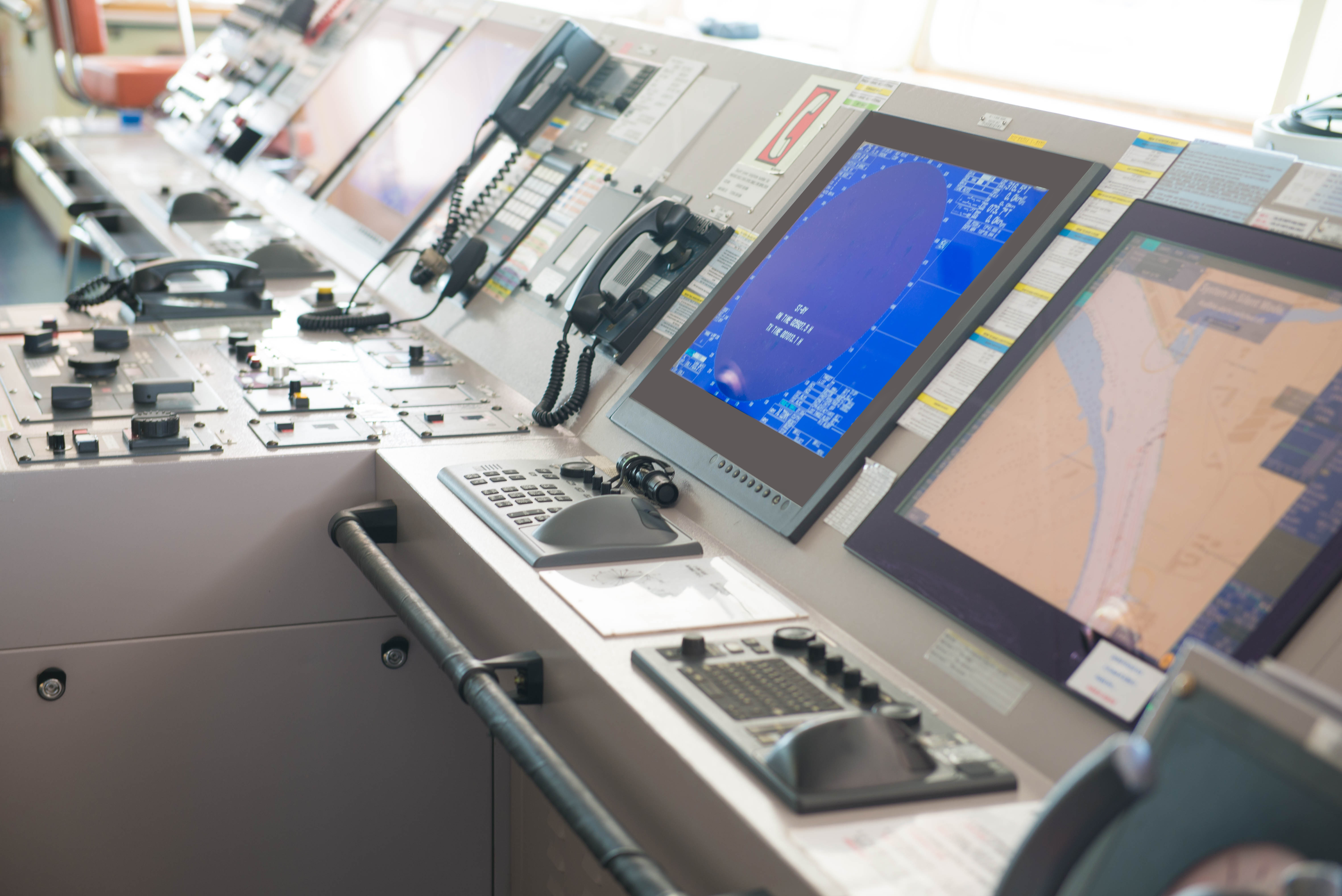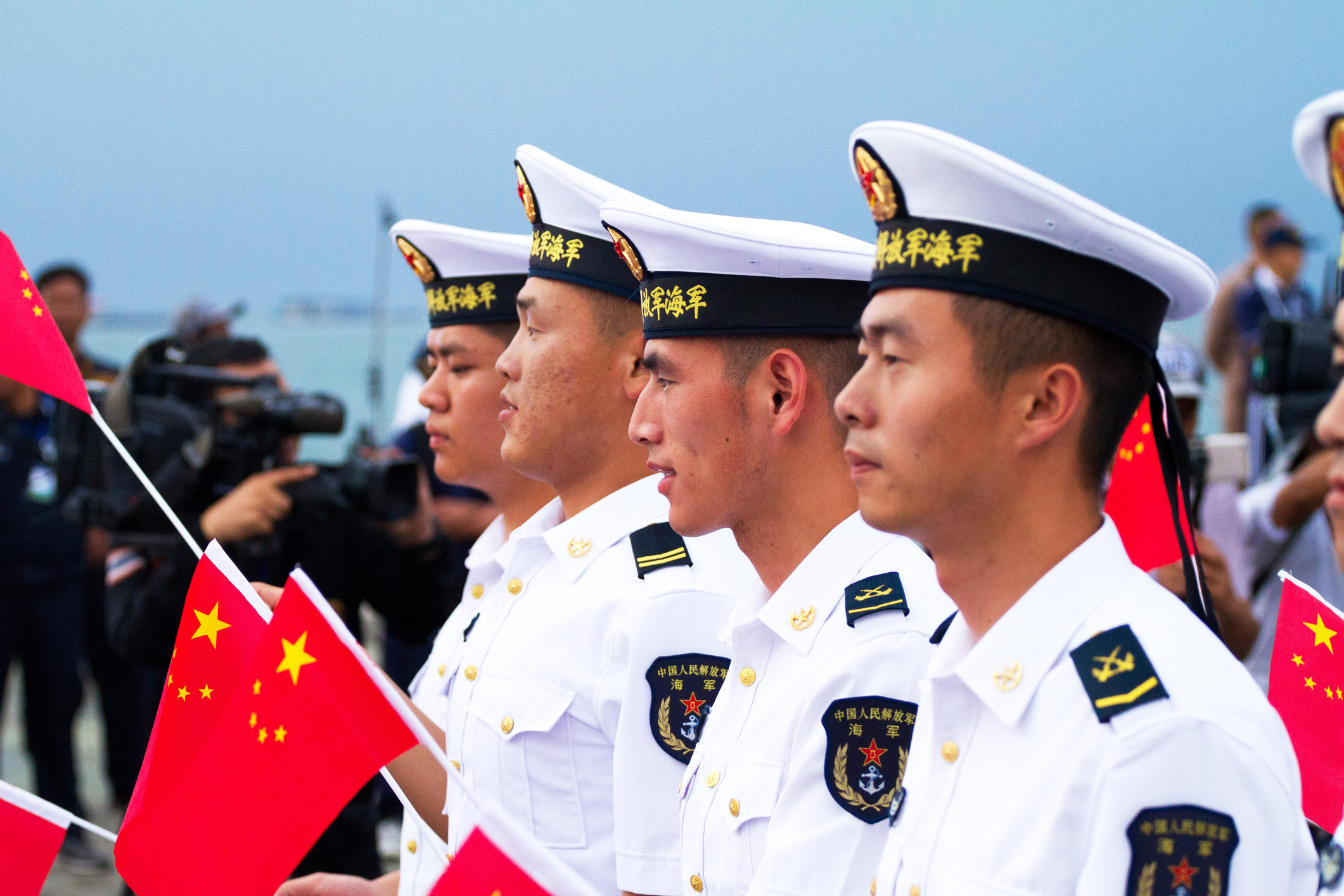Military Communications and Reconnaissance in the Maritime Arena
StartWhen it comes to the abilities of adversaries to threaten U.S. security, the tides are changing -- and they are changing fast. As technological innovation continues to improve and new global tensions emerge, terrorist groups and hostile governments have an ever-changing toolkit of resources and methods to attack the U.S. To stay abreast of these emerging threats, it is necessary to prioritize C4ISR (Command, Control, Communications, Computer, Intelligence, Surveillance, and Reconnaissance) capabilities. Encompassing modes of information gathering and transmission, a strong C4ISR arsenal is a vital component of the United States' strategy to anticipate threats.
1/6
History of Maritime C4ISR
The sea is one realm that the United States has employed—and must continue to employ—C4ISR technologies. Encompassing waters under American sovereignty, as well as international waters in hotspots such as the Persian Gulf and the South China Sea, the sheer vastness of the nautical domain requires the United States to use tools like maritime sensors (technology that scans its underwater environment and transmits the collected data to decision makers) to identify and monitor threats.

Throughout history, humans used investigative tools on their seafaring vessels. Major technological advances include the invention of the telescope in the 17th century and the development of sonar in the early 1900s. The development of satellites, radio, and radar-based identification systems have allowed for improved surface surveillance and warfare. Additionally, maritime sensors are able to pinpoint undersea objects while AI technology has made autonomous vessels, as seen in the Sea Hunter Program, a reality. All of these tools support the C4ISR mission of finding and communicating information about potential threats so that they can be countered.
Contents
2/6
C4ISR: A Governmental Priority?
When it comes to how much the U.S. government values C4ISR, money talks. The best way to understand a governmental priority is to study the funding allocated to it. In the case of C4ISR, the place to look is the annual National Defense Authorization Act (NDAA).
Every year, the U.S. House and Senate independently come up with defense budgets. The two chambers then reconcile the differences in their budgets, and send a final one to the President to sign into law. For the 2018 fiscal year, the legislative branch requested $4,010,000 to go towards “C4ISR Equipment.” This request was fulfilled. The 2019 NDAA had a legislative request and fulfillment of $3,576,000 for C4ISR.

The 2020 NDAA is currently in the works, and therefore has not yet been signed into law. Both the House and Senate have requested $30,146,000 to support C4ISR. This is a significant budgetary increase when compared to the years prior, showing that Congress is recognizing the need for continual C4ISR development. This bodes well for U.S. security, as increased support for C4ISR innovation and acquirement is necessary in order to keep up with rivals.
Contents
3/6
Maritime Rivals
China is the United States' biggest rival in the maritime C4ISR sphere. Since the 1990s, Beijing has increased the size of its fleet, begun patrolling the South China Sea, and engaged in naval operations around the globe, including off the coast of Europe.

On top of that, China has made achieving dominance in the information domain a priority. In 2015, China created the Strategic Support Force (SSF) -- an entity designed to handle cyber-, electronic-, and space-warfare. Along with the SSF, the Chinese Navy is known to employ aspects of C4ISR, such as counterreconnaissance and the disablement of competitors’ GPS and sensor systems.
China’s naval modernization effort encompasses a wide array of platform and weapon acquisition programs, including anti-ship ballistic missiles, anti-ship cruise missiles, submarines, surface ships, aircraft, unmanned vehicles, and supporting C4ISR systems.Congressional Research ServiceRussia’s naval capabilities also pose a formidable threat to the United States. Since Vladimir Putin’s rise to power in the early 2000s, the Kremlin has worked to rebuild a navy that had fallen into disarray after the collapse of the Soviet Union. While Russia’s current C4ISR capabilities trail behind those of the United States, improvements are continually being made. That being said, C4ISR technologies are needed by the U.S. military to counter Russia’s possession of nuclear-powered ballistic missile submarines and several Arctic military bases.
Contents
4/6
Maritime Challenges
C4ISR tools need to be able to overcome different barriers depending on the environment, whether that be on land, on water, or in space. In the sea-based arena, there are two main challenges that currently limit the U.S. military’s C4ISR tools.

The first challenge is the combination of expansive geographic areas and limited time. As the time needed to deploy a weapon on a target has decreased, the time necessary to identify and counter a threat also needs to diminish. While vessels can use radar to detect potential threats, typical ship radar can only reach to the horizon—12 nautical miles away. Detecting at such short distances leaves ships with only a few seconds to respond. Current over-the-horizon radar systems located in Virginia, Texas, and Puerto Rico are able to detect objects up to 1,600 nautical miles away; however, these Cold War-era systems are limited in that they are land-based and can only detect objects that are at least 100 feet long. U.S. vessels would benefit from the development of ship-based over-the-horizon radar systems that can identify objects even shorter than 100 feet, such as naval cutters and most torpedoes.
The second challenge is object interference, or “noise.” In order to be effective, maritime sensors need to be able to quickly identify objects as either benign or threatening. Sensors pick up all large objects in the sea, whether it be a cargo ship, a pod of whales, a pile of floating garbage, or an enemy submarine. It is vital that tools be able to quickly sort through the data so that focus can remain on threatening objects.
Contents
5/6
Communication is Key
The third “C” in C4ISR is “Communications.” While often overlooked when set next to the other aspects of C4ISR, having effective communication tools and networks is critical; if data collected at sea cannot be transferred to decision makers in a timely matter, it is useless.

The U.S. Navy’s current communication network is called the Naval Tactical Data System, or the Fleet Tactical Grid. Developed in the 1950s, it compiles information gathered from marine sensors.
Protected data transport and resilient networking are at the heart of the network-centric paradigm of the Fleet Tactical Grid needed to successfully meet the ‘data to decisions’ timelines for distributed maritime operations.Office of Naval ResearchIn order to keep this system up-to-date and operational, the Office of Naval Research (ONR) investigates ways to enhance antenna technology, radio communications, and wireless networks. ONR lists AI-based techniques, electromagnetic communication, and autonomous network management as research challenges. These challenges provide a space for the Navy and defense contractors to work together to create cutting-edge solutions.
Contents
- Start Over
6/6
Autonomous Unmanned Surface Vehicles
An autonomous unmanned surface vehicle (USV) is a category of ISR-enabling machines that was prototyped by the Defense Advanced Research Projects Agency (DARPA) and is currently under development by the US Navy. Being able to complete data-collection missions in an unmanned fashion removes obstacles that accompany an onboard crew. For example, USVs do not have to carry supplies needed to support human life (food, fresh water, etc.), and they can be deployed to high-risk regions that the military would be hesitant to send manned ships to.
As alluded to earlier, the Sea Hunter is a Leidos-developed USV currently undergoing its first tests as a Navy ship. In January of 2019, it completed its first unmanned trip from San Diego to Hawaii. Once testing is completed, Sea Hunter is expected to have a range of 10,000 nautical miles, a top speed of 27 knots (fast enough to track enemy submarines), and “operate [at] $20,000 per day, compared [to] $700,000 [needed] to run a fully manned destroyer performing similar missions.” The advantages of USV technology are clear, and innovation in this area will continue in the future.
Contents
Military Communications and Reconnaissance in the Maritime Arena
StartWhen it comes to the abilities of adversaries to threaten U.S. security, the tides are changing -- and they are changing fast. As technological innovation continues to improve and new global tensions emerge, terrorist groups and hostile governments have an ever-changing toolkit of resources and methods to attack the U.S. To stay abreast of these emerging threats, it is necessary to prioritize C4ISR (Command, Control, Communications, Computer, Intelligence, Surveillance, and Reconnaissance) capabilities. Encompassing modes of information gathering and transmission, a strong C4ISR arsenal is a vital component of the United States' strategy to anticipate threats.
- Start Over



